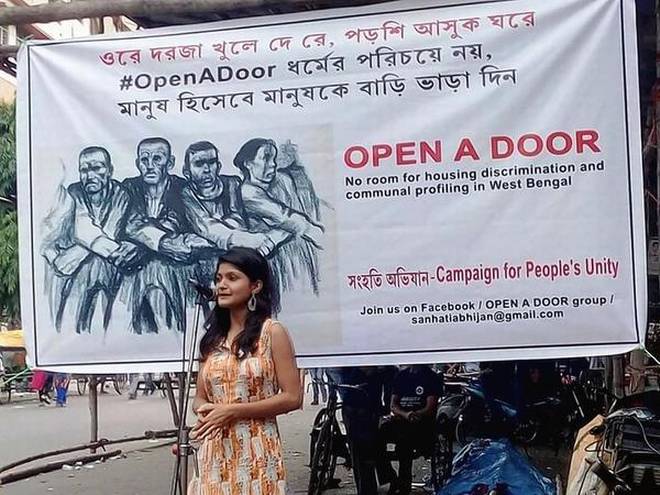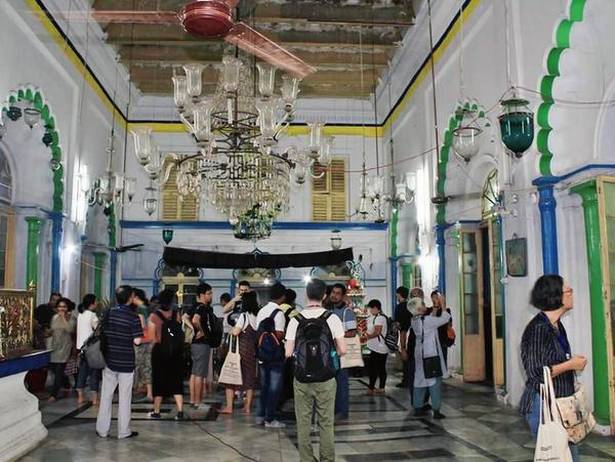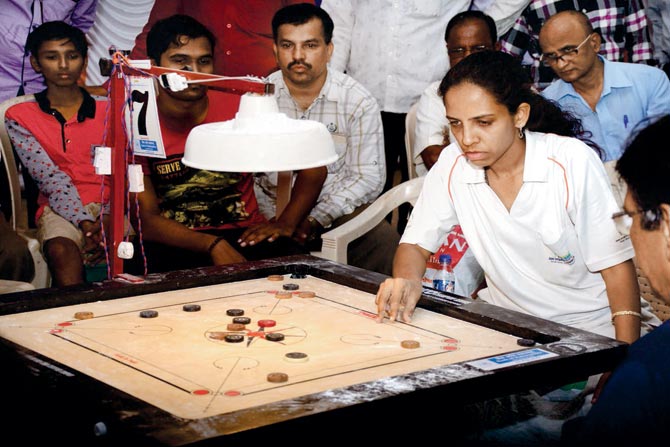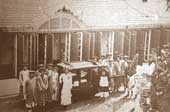Kolkata, WEST BENGAL :

Two voluntary groups enable Hindus and Muslims to interact and look beyond communal misconceptions.
After being turned away by several landlords for months, Aftab Alam and his three friends, all of them doctors, finally found a place to rent in south Kolkata. Their elation, however, was short-lived. Soon after moving in, a neighbour told their landlord that they ought to be evicted, arguing, “Four Muslim men staying in a predominantly Hindu neighbourhood is problematic.”
Dr. Alam recalls, “It was disheartening. I rented the flat to the rest after strenuous night shifts. Suddenly, the peace was disrupted…[we had] huge expectations from Kolkata.”
His predicament was unexpectedly addressed. When he spoke of it on social media, Dr. Alam was contacted by Sanghati Abhijan (SA), a voluntary group that recently initiated its ‘Open-a-Door’ campaign to stop discrimination against potential Muslim tenants. SA’s volunteers resolved the situation by engaging peacefully with the neighbours, the landlord and the tenants themselves.
“We thank them for their support at a critical time,” says Dr. Alam. The intervention helped him and his friends stay on instead of relocating, as they had first planned.
‘Communal remarks’
In another instance, Tanvi Sultana, an undergraduate student, was allegedly targeted with “communal remarks” while looking for a flat in south Kolkata, at times being instructed not to bring beef to her residence. As with Dr. Alam and his friends, SA helped her live in the same apartment. “I thank them and wish for the initiative to grow,” Ms. Sultana says.
Since February, SA has helped about 30 such home-seekers in dire need via its social media group, ‘People’s Unity’. The platform provides a database of houses, apartments and guest houses, with information such on the location of the property, contact details of owners, and rent. The group’s meetings are eye-openers on the communal tensions between property owners and tenants.
“We only enlist property owners who are keen on letting out accommodation without discriminating against a particular faith or on the basis of marital status,” said Dwaipayan Banerjee, one of SA’s co-founders. However, Mr. Banerjee admits that while “hundreds” of tenants approach them, the property owners are “far fewer” in numbers.
SA’s members say they want to “break the culture of silence” which, in turn, could “curb rising Islamophobia.” Anindya Ray Ahmed, a student, was told openly by brokers, “Muslims are dirty and potential terrorists.”
He was ‘rejected’ by 16 landlords before he could find a place to live, but after accepting a deposit, the landlady telephoned him to say, “My husband has a problem with Muslims, so you cannot stay.” Mr. Ahmed alleges that she lowered his deposit down in a bag from her floor above, declining to “stand near a Muslim.”
SA’s members favour direct mediation, but their Facebook page has witnessed about 150 such disagreements and their resolution through virtual owner-tenant interaction on the social media platform.
In another incident, SA informed the Jadavpur University Teachers’ Association and authorities when two students faced misbehaviour from the superintendent and boarders at their hostel “for being Muslim.” An enquiry committee is looking into this case.
SA member Deborshi Chakraborty calls this “exponential ghettoisation” because, often, Muslim tenants seek proximity to their religious peers so that they will not be judged.
Alongside, SA has been prey to moral policing and expressions of paranoia by potential lessors.
The campaign has apparently irked Tripura’s former Governor Tathagata Roy, now Governor of Meghalaya. On August 11, he re-posted a newspaper article on SA and remarked on social media that the paper was trying to “teach Hindu house-owners of Kolkata that they must rent out their premises to Muslims. Otherwise, they are not sufficiently ‘secular’.”
Along similar lines, the Know Your Neighbour (KYN) campaign aimed at reducing communal tensions between Hindus and Muslims is gaining momentum in Kolkata and several districts, too. On a shoestring budget, KYN has organised meetings, sponsored heritage walks, staged plays, and focussed on food to find common ground.

Food walks
“We arrange food walks as the city has a massive culinary culture developed over centuries,” said Sabir Ahamed, a KYN organiser. “Cultural ignorance brews fear. Financial constraints coupled with little-known practices like the Dastarkhān, a traditional space for meals kept on a yellow cloth featuring Urdu couplets, became the basis for speculation over why Muslims ‘eat in bed’. Such ‘myths’ must be broken, which is why we translate the Muslim ‘jargon’ that often dictates daily routine,” says Mr. Ahamed. His intends to delve deeper into this in his forthcoming Masjidi Kolkata project.
KYN’s walks journey into quintessential ‘Muslim pockets’ of Kolkata — Metiabruz, Khidderpore and parts of central Kolkata around the mosques set up by Muslims from Kutch — are followed by interactions with locals.
“Although I am a resident of Kolkata, I had never been to Khidderpore. I took this opportunity to know more about Bengal’s Islamic culture, and to redeem myself of the guilt of assuming that it is a crime-prone area,” says Sanjukta Choudhury, who participated in a KYN walk.
Novelist, academic and foodie Samim Ahmed, an expert on both the Mahabharata and Nawab Wajid Ali Shah’s Bengal, says visits to areas like the Sibtainabad Imambara, a less ornate grave of the last King of Oudh, Wajid Ali Shah, “adds more excitement to the walk.”
Often, visitors discuss food traditions with locals and learn, for instance, about the German bread distributed in Kolkata during the Second World War, dry fruits, and recipes for delicious haleem and biryani.
Non-Muslims are invited to break bread with their Muslim counterparts in KYN’s ‘Dosti ki Iftari’ get-together.
Linguistic explorations, such as tracing the etymological roots of ‘azaan’ (the Islamic call for worship) ringing within the old architecture of the Nakhoda Masjid, are also encouraged.
“Hindus barely visit these pockets of Kolkata, whereas such paranoia is less intense in the rural areas. We aim to eradicate cultural misconceptions by spreading knowledge on prevalent Islamic practices,” Mr. Ahmed says, adding, “Such walks provide an opportunity for communities to know each other in an atmosphere of unmitigated fun.”
source: http://www.thehindu.com / The Hindu / Home> News> Cities> Kolkata / by Tannistha Sinha / Kolkata – August 25th, 2018












